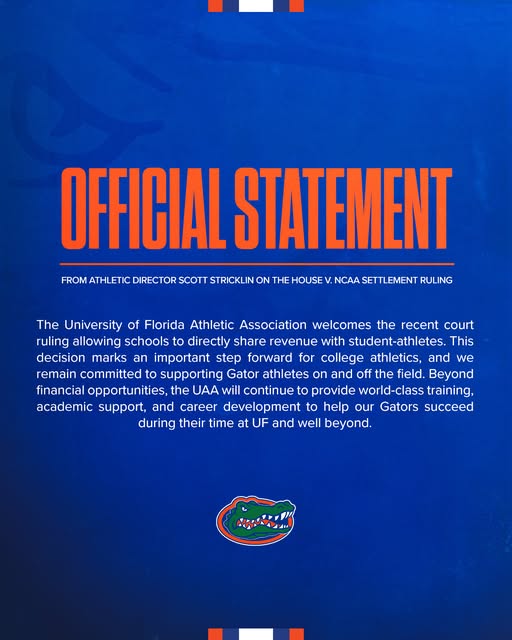Historic $2.8 Billion NCAA Settlement Marks a New Era in College Athletics, Empowering Student-Athletes Nationwide
In a landmark decision that has reshaped the landscape of collegiate sports, a federal judge has approved a historic $2.8 billion settlement in the House v. NCAA case. This ruling, finalized on June 5, 2025, signifies the end of the NCAA’s long-standing amateurism model and ushers in a new era where student-athletes are recognized not only for their athletic prowess but also as integral contributors to the financial success of collegiate sports.
The settlement mandates that the NCAA and its affiliated conferences compensate current and former student-athletes whose rights to earn from their name, image, and likeness (NIL) were restricted prior to 2022. Over the next decade, approximately $2.8 billion will be distributed to athletes who competed between 2016 and 2024, addressing past inequities and setting a precedent for future compensation structures.
Effective July 1, 2025, Division I institutions are permitted to directly compensate student-athletes, with annual payments capped at $20.5 million per institution. This cap is expected to increase over time, reflecting the growing revenues of collegiate athletics. The funds are to be allocated among athletes based on sport, tenure, and individual contribution, ensuring a fair distribution that acknowledges the diverse roles played by student-athletes across various disciplines.
In addition to direct compensation, the settlement introduces several structural changes aimed at promoting equity and transparency. A new entity, the College Sports Commission, will oversee NIL-related payments, ensuring compliance with established guidelines and preventing exploitation. Furthermore, roster limits will be implemented to maintain competitive balance, and the “Designated Student-Athletes” category will protect walk-on players from adverse roster changes, allowing for unpenalized transfers or returns.
The financial implications of the settlement are substantial. Schools in the Power Five conferences—Big Ten, SEC, ACC, Big 12, and Pac-12—are projected to bear the majority of the settlement costs, with each institution expected to contribute approximately $300 million over the next decade. While this represents a significant financial commitment, it is viewed as a necessary investment to ensure the sustainability and integrity of collegiate athletics.
Despite the positive strides made, the settlement has not been without controversy. Some athletes and advocates have expressed concerns that the bulk of the compensation may disproportionately benefit athletes in high-revenue sports like football and men’s basketball, potentially sidelining those in non-revenue sports. Additionally, while the settlement addresses compensation issues, it does not resolve all legal challenges facing the NCAA, including debates over athlete employment status and the right to collectively bargain.
In response to these concerns, NCAA President Charlie Baker emphasized the organization’s commitment to adapting to the evolving landscape of college sports. He acknowledged the need for continued dialogue and collaboration with all stakeholders to ensure that the benefits of the settlement are equitably distributed and that the integrity of collegiate athletics is upheld.
The approval of this settlement marks a pivotal moment in the history of college sports. It reflects a broader societal shift towards recognizing the rights and contributions of student-athletes, acknowledging that their efforts generate significant revenue and deserve appropriate compensation. As the implementation phase begins, all eyes will be on how these changes are executed and whether they lead to a more equitable and sustainable model for collegiate athletics.
In conclusion, the $2.8 billion settlement represents more than just a financial transaction; it symbolizes a fundamental transformation in the relationship between student-athletes and the institutions they represent. While challenges remain, this development sets a promising precedent for the future of college sports, where the value of student-athletes is recognized and rewarded in a manner befitting their contributions.



